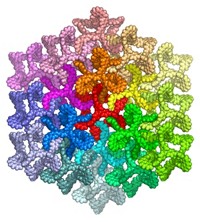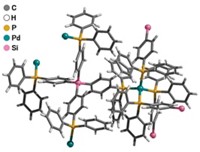Advertisement
Grab your lab coat. Let's get started
Welcome!
Welcome!
Create an account below to get 6 C&EN articles per month, receive newsletters and more - all free.
It seems this is your first time logging in online. Please enter the following information to continue.
As an ACS member you automatically get access to this site. All we need is few more details to create your reading experience.
Not you? Sign in with a different account.
Not you? Sign in with a different account.
ERROR 1
ERROR 1
ERROR 2
ERROR 2
ERROR 2
ERROR 2
ERROR 2
Password and Confirm password must match.
If you have an ACS member number, please enter it here so we can link this account to your membership. (optional)
ERROR 2
ACS values your privacy. By submitting your information, you are gaining access to C&EN and subscribing to our weekly newsletter. We use the information you provide to make your reading experience better, and we will never sell your data to third party members.
Materials
Modulating MOFs
A postsynthetic modification provides control over the flexible “breathing” behavior of pores in metal-organic frameworks
by Stephen K. Ritter
November 23, 2009
| A version of this story appeared in
Volume 87, Issue 47
By modifying amine groups in a metal-organic framework (MOF), Zhenqiang Wang and Seth M. Cohen of the University of California, San Diego, have shown that it’s possible to activate the “breathing” behavior of pores in the materials to selectively adsorb gases or other molecules. The finding marks the first time researchers have used a postsynthetic modification to trigger and control the flexibility of MOFs (J. Am. Chem. Soc., DOI: 10.1021/ja907742z). MOFs are porous materials with high surface areas that are ideal for catalysis, separation, sensing, and gas-storage applications. Most MOFs are rigid crystalline solids, but a small subset of the materials has unique flexible frameworks that permit the pores to open and narrow. Cohen’s group built a flexible MOF from zinc carboxylate units joined by 1,4-diazabicyclo[2.2.2]octyl groups in one direction and by 2-amino-1,4-benzenedicarboxylates in the other direction (Inorg. Chem. 2009, 48, 296). Wang and Cohen then treated the MOF with alkylanhydrides of various lengths (O[CO(CH2)nCH3]2) to form amide groups. The short-chain amide (n = 0) narrows the pores and the longer chain amides (n = 3–5) hold the pores open, but the medium-length chains (n = 1 or 2) are just right, creating a bistable framework that leads to controlled breathing.




Join the conversation
Contact the reporter
Submit a Letter to the Editor for publication
Engage with us on Twitter